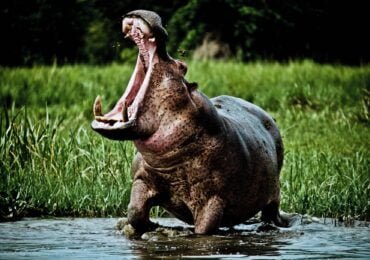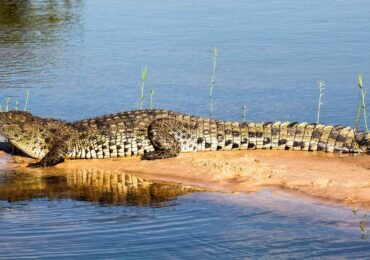Wildlife Along the Nile’s Banks
The Nile River, famously known as the longest river in the world, offers more than just historical significance. It is a cradle of life, providing sustenance to a myriad of species that have adapted to life along its banks. The river’s ecosystem hosts an incredible biodiversity, from the smallest of insects to the grandest of mammals. Each playing a crucial role in maintaining the balance of this unique habitat. In this article, we will delve into the array of the wildlife found along the banks of the Nile and the dynamic ecosystems they inhabit.
The Lifeline of the Region
The Nile stretches over 6632 kilometers (approximately 4125 miles), flowing through eleven countries before emptying into the Mediterranean Sea. The banks of the Nile offer a wealth of resources, including rich soil for agriculture. Abundance of water, which is especially precious in the surrounding arid regions. This has made the river an ideal location for both human civilization and wildlife to flourish side by side.
Avian Abundance
Birds of Prey
The Nile’s banks are a haven for birdwatchers, with a variety of species residing in and migrating through the area. Birds of prey, such as the majestic African Fish Eagle and Osprey, can often be seen soaring above the water, diving down with incredible precision to catch their prey.
Wading and Waterbirds
Wading birds, like the iconic Grey Heron and the colorful Purple Heron, stalk the shallows in search of fish and amphibians. Meanwhile, the river’s surface is dotted with an assortment of ducks, geese, and the unique Shoebill Stork. Shoebill Stork is a prehistoric-looking bird that has become synonymous with the Nile’s wildlife.

Mammalian Residents
The Nile is not only a sanctuary for birds but also for various mammals.
Semi-Aquatic Species
Hippopotamuses, one of the most recognizable species along the Nile. They spend much of their time submerged in the river’s waters to keep cool under the hot African sun. Their presence is vital to the ecosystem, as their movements in the water create channels that allow fish to travel and spawn. The male hippopotamus was represented in the Egyptian mythology as god Seth. Seth was evil god who killed his kind brother Osiris. While the female hippopotamus was represented as goddess Tauret, goddess of Childbirth in ancient Egypt.

Predators and Prey
Alongside these semi-aquatic giants, the banks are also home to predators like the Nile Crocodile. Nile Crocodile is known for its impressive size and predatory skills. It was revered in ancient Egypt as god, Sobek of fertility. Sobek had cult centers in El-Fayoum in Lower Egypt and Kom Ombo in Upper Egypt. Many mummies of crocodiles were found from ancient Egypt. So, the Crocodile Museum was built nearby Kom Ombo Temple to house some crocodiles’ mummies. Antelopes, such as the elegant Gazelle, graze nearby, always alert to presence of these formidable reptiles.
Insects and Amphibians
Pollinators and Pests
The banks of the Nile also teem with insect life. Bees and butterflies act as important pollinators for the river’s surrounding vegetation. The honeybee was used as a Hieroglyphic ideogram for the meaning of a (bee). Most frequently was used as apart of the title (NSWT-BITY), which means King of Upper and Lower Egypt. As well as, ancient Egyptians used wax from bees to make their paints.

Swarms of mosquitos remind us of the river’s challenges. Pharaoh Tutankhamun died from Malaria at the age of 19 years. Egypt is Malaria-free zone since 1975. Despite of being a nuisance, these insects are a critical food source for many fish and birds.
Amphibian Life
Frogs and toads are abundant along the river’s edge, providing a chorus of croaks and ribbits that animate the soundscape. These amphibians are integral to controlling insect populations and serve as an indicator of the river’s health.
Reptilian Inhabitants
The Nile Crocodile
No discussion of the Nile’s wildlife is complete without mentioning the Nile Crocodile. These ancient reptiles are apex predators within the river’s ecosystem and have been revered and feared since ancient times. The Nile Crocodile was revered in ancient Egypt as god, Sobek of fertility. Sobek had cult centers in El-Fayoum in Lower Egypt and Kom Ombo in Upper Egypt. Many mummies of crocodiles were found from ancient Egypt. So, the Crocodile Museum was built nearby Kom Ombo Temple to house some crocodiles’ mummies. Nile Crocodiles are a testament to the wild and untamed nature that still exists along the banks of the Nile.

Other Reptiles
Lizards and snakes also inhabit the Nile’s banks. From the harmless Nile Monitor to the more dangerous Egyptian Cobra. These reptiles help maintain the balance of the ecosystem by preying on various small mammals and insects. Cobra symbolizes protection in ancient Egypt. A crown of Cobra was made for the Egyptian pharaoh to wear on his forehead for his protection.
Aquatic Diversity
The Nile River itself is home to a diverse range of fish species. From the large Nile Perch, which can weigh up to 200 kilograms (about 440 pounds), to the smaller but equally important Tilapia. These fish are a crucial part of the local diet for humans and animals alike. Ancient Egyptians saw the Cat Fish as an evil fish due to eating the penis of god Osiris, when he was dismembered by his brother Seth. Seth dismembered the body of his brother into 42 pieces. He scattered them far and wide in Egypt with throwing Osiris’s penis in the Nile River. A cat fish ate it, since that it was not allowed for priests to eat cat fish at the temples. As well, it was not accepted as a temple’s offering.

The Fotheringay Connection
The Song ‘Banks of the Nile’
The ‘banks of the Nile’ also hold cultural significance beyond wildlife. The song ‘Banks of the Nile’ by the British folk rock group Fotheringay tells the story of a woman lamenting her lover’s departure to war. It’s a poignant reminder of the Nile’s place in human history and culture, as well as its impact on the arts.
Conservation Efforts
With the growth of the human population and expansion of agriculture and industry. The banks of the Nile face environmental pressures. Conservation efforts are essential to preserve the delicate ecosystems and the wildlife that depends on the river.
Sustainable agricultural practices, responsible water management, and pollution control are all crucial to maintaining the health of the Nile’s ecosystems. Protecting the river’s biodiversity not only benefits the wildlife but also the people who rely on the Nile for their livelihoods.
In Conclusion
The banks of the Nile are more than a geographical feature. They are a vibrant, living system that supports an incredible array of life. From the smallest insect to the largest mammal, each species depends on the river and contributes to its overall health. As we marvel along the Nile’s banks, it is our responsibility to ensure that this ancient river can continue to sustain life for generations to come.
By understanding the importance of the Nile’s ecosystems and promoting conservation. We can help protect this vital lifeline and the magnificent creatures that call it home.

